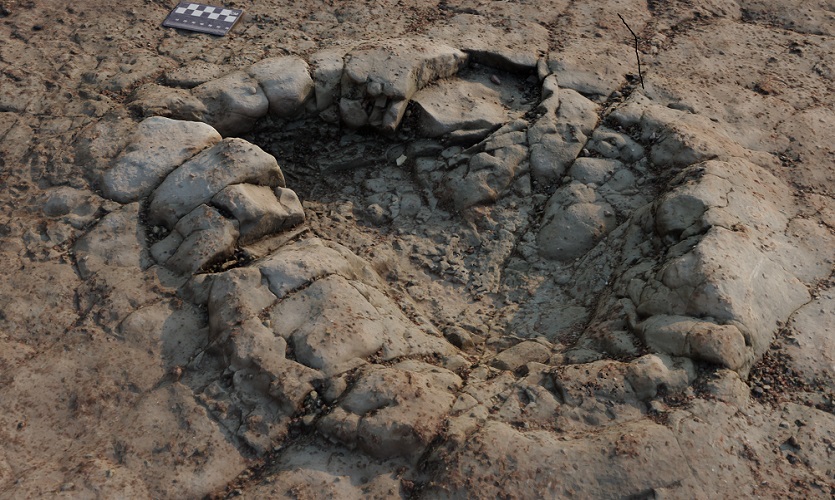Giant footprints confirmed as Welsh 'diplodocus'

Giant imprints found on a beach in south Wales were made by an ancestor of the diplodocus, according to forensic analysis by Liverpool John Moores University and collaborators.
Scientists and locals spent more than a decade wondering if they were looking at dinosaur tracks or simply tidal erosion but a new paper in Geological Magazine confirms they were indeed made by an early sauropod, more than 200 million years ago.
“These are footprints are from an early ancestor of the giant diplodocus, plant-eating dinosaurs that date back to the Triassic period,” said Dr Peter Falkingham, reader in vertebrate ecology and a leading expert in fossilised animal tracks.
“The tracks are particularly large for this type of track found this early in the fossil record and we have concluded, based on contemporaneous material and the size of the tracks, that it was probably an early sauropod.”
State-of-art techniques
The study into the footprints on the coast at Penarth was conducted by a team from Cardiff University, National Museum Wales, Natural History Museum, Liverpool John Moores University and the University of Lyon.
Professor Paul Barrett from the Natural History Museum said: “This is a very early, distant relative of things like diplodocus, long-necked, barrel-bodied dinosaurs.”
Identifying animal tracks involves studying not only size and spacing but also the way the foot impacts the mud or sand. Using state-of-the-art photogrammetry meant the team could re-colour and re-light the tracks and weren’t constrained by the times of the tides.
“It seemed that the impressions would overlap in places, as would be expected if multiple animals were trampling the ground,” explains Dr Falkingham.
'Clincher'
The real clincher though was a toe imprint from photographs taken a decade earlier: “I used the photos to build a 3D model of the site as it was in 2009. One of the tracks visible in that model had what we interpreted as digit impressions, and that sealed the deal for us that they were tracks.”
The Penarth beach is one of very few Triassic track sites in the UK.
See BBC coverage of the story here.


